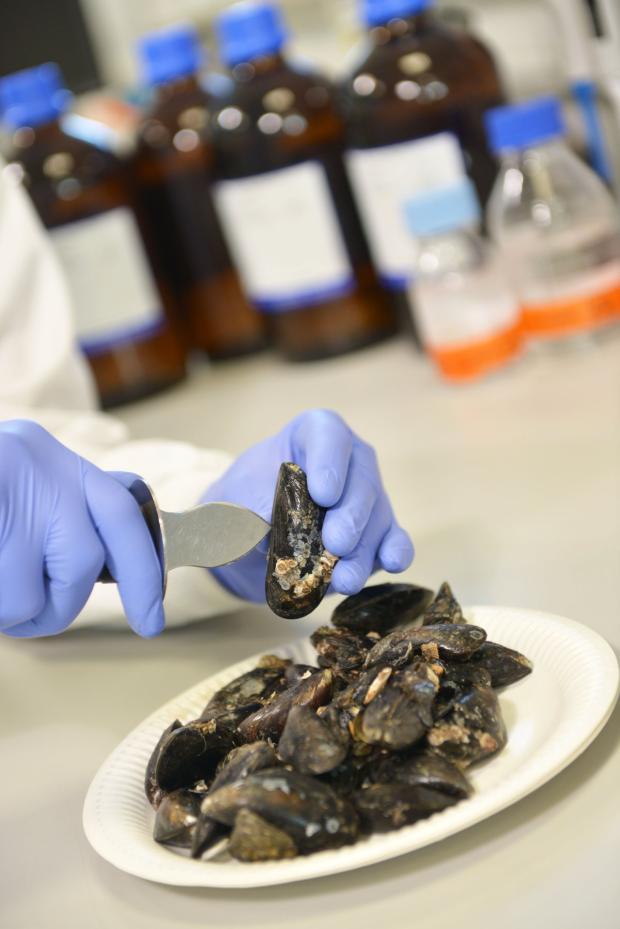Marine biotoxins in shellfish
Marine biotoxin analysis by the Chemical and Immunodiagnostic Sciences Branch (CISB) at AFBI Stormont, on behalf of the Food Standards Agency (FSA)
Marine Biotoxins in Shellfish

- Paralytic Shellfish Poisoning (Saxitoxin and its analogues, potentially fatal)
- Diarrhetic Shellfish Poisoning (Okadaic Acid, Azaspiracid, Yessotoxins and Pectenotoxins)
- Amnesic Shellfish Poisoning (Domoic Acid)
The toxins have no visible effect on shellfish and many toxins are resistant to cooking or freezing. Hence, shellfish beds are sampled throughout the year, on a ‘positive release’ basis.
If a sample is found to contain a toxin, harvesting is suspended at the site until two consecutive samples taken no less than 48 hours apart are found to be toxin free.
Regulations
Commission Regulation 853/2004 and subsequent regulations lay down the health conditions and methods of analysis of certain marine biotoxins, for the production and placing on the market of live bivalve molluscs.
As part of the controls to protect public health, Commission Regulation 2019/627 requires the Competent Authority (FSA) to carry out monitoring of relaying and production areas for the presence of toxin-producing phytoplankton in water and biotoxins in shellfish tissue.
Biotoxin analysis
CISB undertakes the biotoxin analysis on behalf of FSA in NI. The biotoxins specified within the legislation are Paralytic Shellfish Toxins, the Lipophilic Toxin Group (Okadaic Acid, Azaspiracid, Pectenotoxins and Yessotoxins) and Amnesic Shellfish Toxin (Domoic Acid).
CISB uses chemical methods for the detection of all the regulated marine biotoxins.
High-Performance Liquid Chromatography (HPLC)
HPLC methods are used for the detection of Paralytic Shellfish Poison (saxitoxin and its analogues) and Amnesic Shellfish Poison (domoic acid).
Liquid Chromatography Mass Spectrometry (LC-MS)
Since July 2011, LC-MS/MS has been implemented for the detection and quantification of the Lipophilic Toxin group (Okadaic Acid, Azaspiracid , Yessotoxins and Pectenotoxins).
Related links: